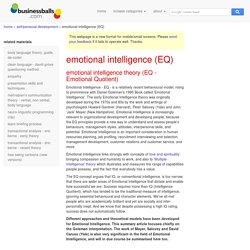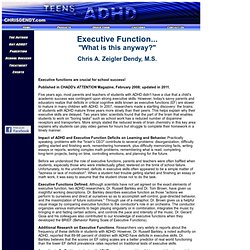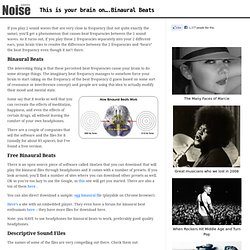

Visual. Middle, Secondary and adult learners with Learning disabilities. Audio. The four sensory learning styles are auditory, kinesthetic, tactual, and visual. Learning Styles Inventory and Professional Development Educators around the world have found that by differentiating instruction to address individual learning styles, their students learn faster, retain better, and are more successful in “connecting the dots” to other facets of the curriculum.

PLS 3rd Learning has developed a five-hour online professional development module for incorporating our patented learning styles inventory, The Kaleidoscope Profile® into the classroom. Course Contents A complimentary copy of The Kaleidoscope Profile®A repertoire of classroom-ready multisensory activities and strategiesA lesson planning form for designing multisensory lessonsA variety of useful resources, including a printable Learner’s Guide.
Emotional Intelligence theories - Daniel Goleman's EQ concepts. This webpage is a new format for mobile/small screens.

Please send your feedback if it fails to operate well. Thanks. emotional intelligence theory (EQ - Emotional Quotient) Emotional Intelligence - EQ - is a relatively recent behavioural model, rising to prominence with Daniel Goleman's 1995 Book called 'Emotional Intelligence'. The early Emotional Intelligence theory was originally developed during the 1970s and 80s by the work and writings of psychologists Howard Gardner (Harvard), Peter Salovey (Yale) and John 'Jack' Mayer (New Hampshire). Emotional Intelligence links strongly with concepts of love and spirituality: bringing compassion and humanity to work, and also to 'Multiple Intelligence' theory which illustrates and measures the range of capabilities people possess, and the fact that everybody has a value.
The EQ concept argues that IQ, or conventional intelligence, is too narrow; that there are wider areas of Emotional Intelligence that dictate and enable how successful we are. APPENDIX B: Multiple Intelligences. Studying Style - A guide to learning styles - Tactile-Kinesthetic Learners. Tactile-Kinesthetic Learners Making up about 5% of the population, tactile and kinesthetic learners absorb information best by doing, experiencing, touching, moving or being active in some way.

Enjoy feeling, discovery and action Remember by using tools, building models and manipulating things Learn through emotions, touch, movement and space Enjoy demonstrations of concept demonstrations Master skills through imitation and practice. Benefit from hands-on teaching techniques Find it difficult to sit still for long periods of time. Remember who did what in the past, rather than what they said or how they looked. Prefer to stand, walk about or use large motor muscles when learning.
Create a model Demonstrate a principle Practice a technique Participate in simulations Engage in hands-on activities Study in comfortable position, not necessarily sitting in a chair. Studying Style - A guide to learning styles - Tactile-Kinesthetic Learners.
Executive Function. Executive Function...

"What is this anyway? " Chris A. Zeigler Dendy, M.S. Executive functions are crucial for school success! Published in CHADD's ATTENTION Magazine, February 2008; updated in 2011. Five years ago, most parents and teachers of students with ADHD didn't have a clue that a child's academic success was contingent upon strong executive skills. Impact of ADHD and Executive Function Deficits on Learning and Behavior. Before we understood the role of executive functions, parents and teachers were often baffled when students, especially those who were intellectually gifted, teetered on the brink of school failure. Executive Functions Defined. Additional Research on Executive Functions. According to Dr. Real World Impact. Components of Executive Function Based upon material from Barkley, Brown, and Gioia I have outlined eight general components of executive function that impact school performance: Poor Working Memory and Recall.
LDR Study and Organization Tools. LDR. Sc_dec1_2006_learning_styles_kinesthetic. Learning Disabilities Resource Community - Home - Projects - Multiple Intelligence Inventory. Multiple Intelligence Inventory ( MI-Inventory Project Page ) ( Read about eight styles of learning ) (Try the Sternberg-Wagner Thinking Styles Inventory ) (Try the Stencil Stacking task and learn about metacognition.)

(Try the Scanning Task to learn about perceptual processes in reading.) [This inventory is adapted from Howard Gardner's work on multiple intelligences, and has been modified to include an eighth intelligence developed by Gary Harms: Naturalistic Intelligence. For a full discussion of multiple intelligences, refer to Howard Gardner's book "Frames of Mind" (New York, NY: Basic Books, 1983).
Also see the Multiple Intelligences Workshop and read about eight styles of learning. ] [ Printable English version of the inventory ] [ Printable Spanish version of the inventory (PDF 144kb): Special thanks to Sonia Rivera] There are currently 6 users taking the inventory. Note: All fields are required. Free Binaural beats: This is your brain on binaural beats - sound meditation. If you play 2 sound waves that are very close in frequency (but not quite exactly the same), you’ll get a phenomenon that causes beat frequencies between the 2 sound waves.

As it turns out, if you play these 2 frequencies separately into your 2 different ears, your brain tries to resolve the difference between the 2 frequencies and “hears” the beat frequency even though it isn’t there. Binaural Beats.